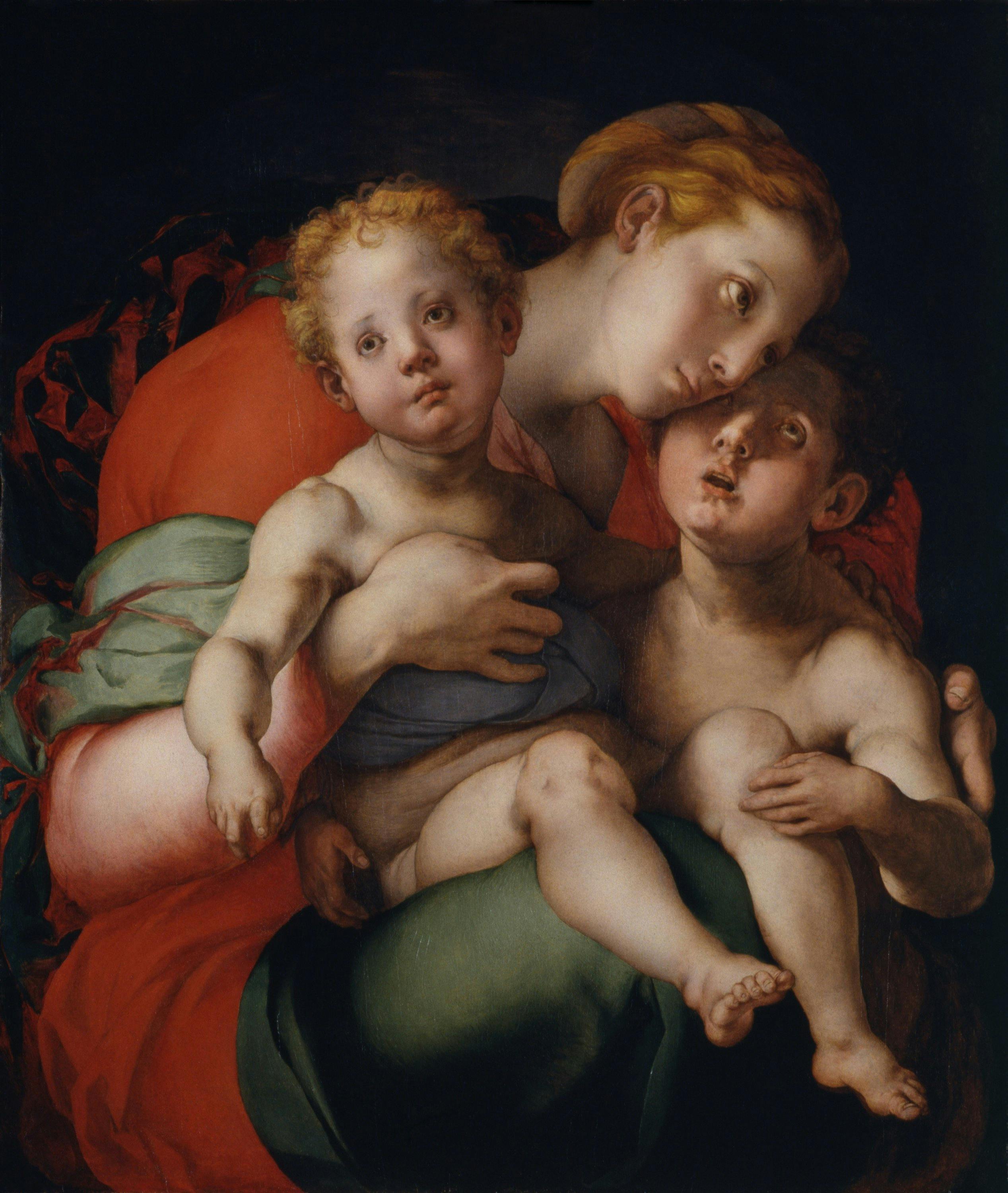Madonna with Child and the young Saint John
Jacopo Carucci, known as Pontormo (Pontorme, Empoli 1494 – Florence 1556)
Dating from Pontormo's mature period, this unfinished work was rediscovered in 1907 thanks to the renowned art historian Carlo Gamba. It was found in storage in the Florentine Galleries after being relegated from the main rooms due to unfortunate criticism directed at the artist. The painting, which had previously been interpreted as a depiction of Charity because of the very human affection between the woman and the two children, is striking for its unusual use of light and the dramatic encroaching shadows which allude almost inevitably to the future deposition of Christ. The use of bright colors typical of Pontormo’s work brings a surreal element to the composition which assumes a dreamlike, theatrical quality. The painting is characterized by a subtle but intentional return to a Leonardesque style, onto which the artist employs a technique to create the shapes of the bodies inspired by Michelangelo’s Sistine Chapel ceiling. In fact, Pontormo's use of pure color to render the front and back of the bodies appears to be derived directly from Michelangelo's work. The striking Madonna, whose figure is also Michelangelesque in shape, bends forward to embrace the Baby Jesus sat upon her knee and the young Saint Join on the right. The twisting body and poignant expression of the young Saint John, as well as the Child's extended leg, are reminiscent of works such as the Medici Madonna created by Michelangelo during the same period. The work's incompletion may be due to its effective coincidence with the siege of Florence (from October 1529 to August 1530), a difficult period for the people of Florence and which likely had a profound effect on Pontormo's sensitive character, leading him to intensify his use of shapes, colors and lights throughout his works.
